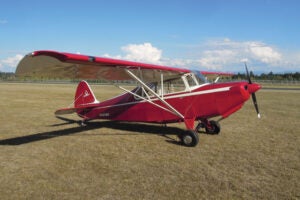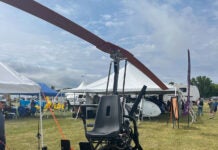 Question: I am building a gyroplane from pieces of an RAF 2000. I will be building my own frame with dropped keel and main gear suspension. The only parts that are from an RAF are the cabin, rudder and mast. How do I go about licensing it as a Sport Pilot-class homebuilt? Also, what do I do about a serial number and what should I put as manufacturer, as I will be designing most of it?
Question: I am building a gyroplane from pieces of an RAF 2000. I will be building my own frame with dropped keel and main gear suspension. The only parts that are from an RAF are the cabin, rudder and mast. How do I go about licensing it as a Sport Pilot-class homebuilt? Also, what do I do about a serial number and what should I put as manufacturer, as I will be designing most of it?
Answer: There should be no problem with your building your own gyroplane. Since you are using some parts from another aircraft, you are required to use the Amateur-Built Fabrication and Assembly Checklist (2011) Gyroplane form to prove 51% amateur-built status. The form will help you determine if you’ve completed enough of the gyro yourself because it counts up the components as part of the original kit (manufacturer/kit component) and those you have assembled and/or fabricated. As with other homebuilts, you have to prove you completed “more than 50%” of the tasks, which combine assembly and fabrication.
The aircraft will be certificated in the Experimental/Amateur-Built classification. You may assign any serial number you wish as long as you have not previously used this number on an aircraft. You will be the manufacturer of the aircraft.

acceptable, but know that simpler is usually better.
Question: If I design and build my own Experimental aircraft using ideas from existing designs, will I need engineering reports, etc., in order to get my airworthiness certificate? I want to build an airplane that uses ideas from existing designs such as the Piper PA-17, Christavia, Bearhawk and Zenith.
Answer: Good question. Actually there are no specific requirements to supply engineering data on an amateur-built aircraft of your own design. You should, however, have some data to support your design. Having said that, keep in mind that the inspector can deny the airworthiness certificate on the basis of anything he or she feels is unsafe. This, of course, is somewhat subjective. If your design is reasonably simple and straightforward, it should not be a problem. It might be a good idea to discuss this with your chosen inspector before it’s time for the inspection.













